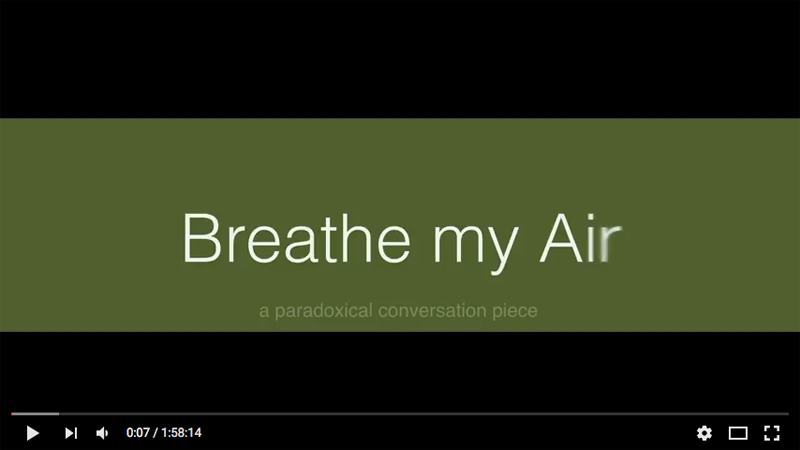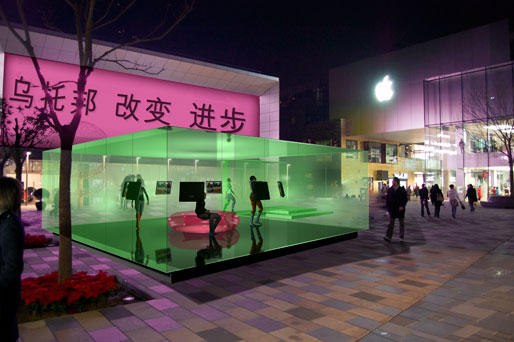
Breathe My Air
Visualising the Invisible in the Social Environment
Gerald Nestler and Sylvia Eckermann
INTRO
The two basic materials od Breathe My Air are both ephemeral and invisible as they are vital: Air and Thoughts. Filled with purified and oxygenated air, a temporary pavilion is set up in Beijing’s urban public space. A transparent site that opens to the cityscape, it is dedicated to a "paradoxical conversation" inside, an audio-visual exchange of ideas and thoughts on issues we feel to be at the basis of a dialogue not only between different cultures but between individuals and their respective backgrounds.
THE THOUGHTS EXCHANGED
The conceptual framework for the recordings is based on Oriental Chinese as well as Occidental notions of society, art, nature and environment. It fashions a platform that spans history, time and ideas of both cultures by conducting an exchange between contemporary proponents of art, philosophy and culture.
We refer to this mutual engagement as a paradoxical conversation: The participants do not meet physically, their contributions are edited to form strips of interweaving, emphatic and thoughtful information.
At the core of our video recordings are notions regarding Progress, Change and Utopia. These terms are examined for their past and present influence on the individual participants and their respective cultures.
Interpretations are grounded in socio-cultural environments. The more we share and interact, the more we learn to perceive our cultural settings as differentiations inside a global perspective, the more prolific, the more intertwined this exchange is going to become, developing new, alternative forms of cohabitation along the way.
THE PARTICIPIANTS
in order of recording
 |
 |
|
||||||
 |
 |
 |
||||||
 |
 |
 |
||||||
 |
 |
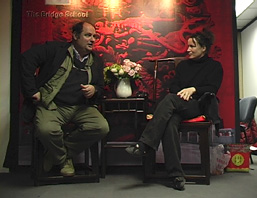 |
||||||
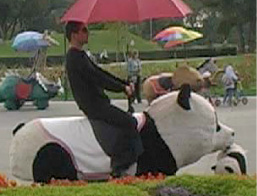 |
|
|||||||
 |
 |
|
||||||
 |
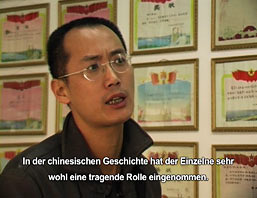 |
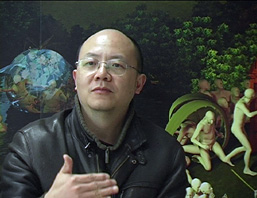 |
||||||
 |
 |
 |
||||||
 |
 |
 |
||||||
|
 |
|||||||

 |
 |
|
||
 |
 |
|||
 |
 |
|||
 |
||||
|
 |
|||
THE BORROWED VIEW / SCENERY
The archtectural as well as conceptual setting for the exchange is the pavilion. It traces back to ancient Chinese philosophy and art when scholars would meditate a landscape by inscribing poems and meditate the view on these natural ‘artscapes’ that constituted their sceneries from these specific open architectural structures. Here, the concept of Jie Jing, of "borrowing the scenery" (Chinese for pavilion), comes into play as a cultural practice to incorporate a distant vista into the composition. A river, the ocean, fields, large trees, or even a building—all could serve this purpose, with a distant mountain being the most frequently borrowed scene.
This Chinese interpretation of the pavilion is fused with a Western approach on art that refers to the development of the White Cube as part of modern exhibiting and later the Black Box as its supplement for moving images. Our pavilion as an open structure from where we all project our ideas, utopias and emotions into the surrounding or were we rest for introspection corresponds to our adaptation of yet another showcase—the Green Box (or Blue Box respectively), where we combine the qualities of the White Cube/Black Box with a projecting, participatory, transparent approach.
Borrowing the view of the urban sprawl that makes up our cityscapes today where the ‘poems’ of a consumerist society are engraved in the sight of everybody, we invite the public to literally inhale air of an "utopian formula" and engage in the exchange of a present utopia. We re-direct the view from the economic-political gentrification of the public-to-private urban space into the contemplative atmosphere of the pavilion: In Breathe My Air, the scene / scenery is not a view but the presence that is incorporated in the composition of our artistic arrangement. It is a contemporary conceptual translation of the distant mountain’s presence in form of the ambient air with all its diverse significances.
This specific concept of ancient Chinese art and philosophy seems to us to hold a significant potential, especially in relation to current artificial approaches to nature and regarding the crucial if not still paradigmatic importance of progress, change and utopia in our world(s). Although we seal the physical space to allow for the air to retain its quality, we open the pavilion visually and also virtually as a space in (or rather out of) which the visitors may participate, by projecting their own ideas and feelings on co-existence inside a single global environment containing diverse approaches to life.
THE THIRD SKIN
By building such a "Third Skin," we aim to facilitate a conversation of a multitude of individual voices and from there develop a vocabulary, an artistic flow that connects these seemingly invisible but vital aspects of our cultural and environmental economies. It addresses a common, forceful and imaginative approach to understand, work on and change our personal as well as environmental habitat that constitute our future and common "assets."
Exchange as an alternative "currency" of socio-cultural information and commodities flows is a practice in personal communication and cultural enrichment that is not standardized (in contrast to money) and is mutual (in contrast to the gift). In a more and more global world, it allows for a direct, fluid, integrative and participative communicationand practice. In Breathe My Air, it materializes to an "invisible sculpture" that is an homage to extended and extensive ranges of perceptions in-between.
As an art project, Breathe My Air can neither change the quality of a city such as Beijing nor influence political or economic powers and their standardized contracts that form our future in reality. What it can do--and what might be called its utopia, is help build our vistors' experience that it does matter and that it is of vital importance to engage yourself by participating, acting, theorizing and last but not least by exchanging on all possible "channels".
 |
|
|
"Borrowing the view of the urban sprawl that makes up our cityscape today where the ‘poems’ of a consumerist society are engraved in the sight of Everybody, we invite the public to literally inhale air of an ‘utopian formula’ and engage in the exchange of a present utopia".
Visualisations of the Air Pavilion in various locations:
|
